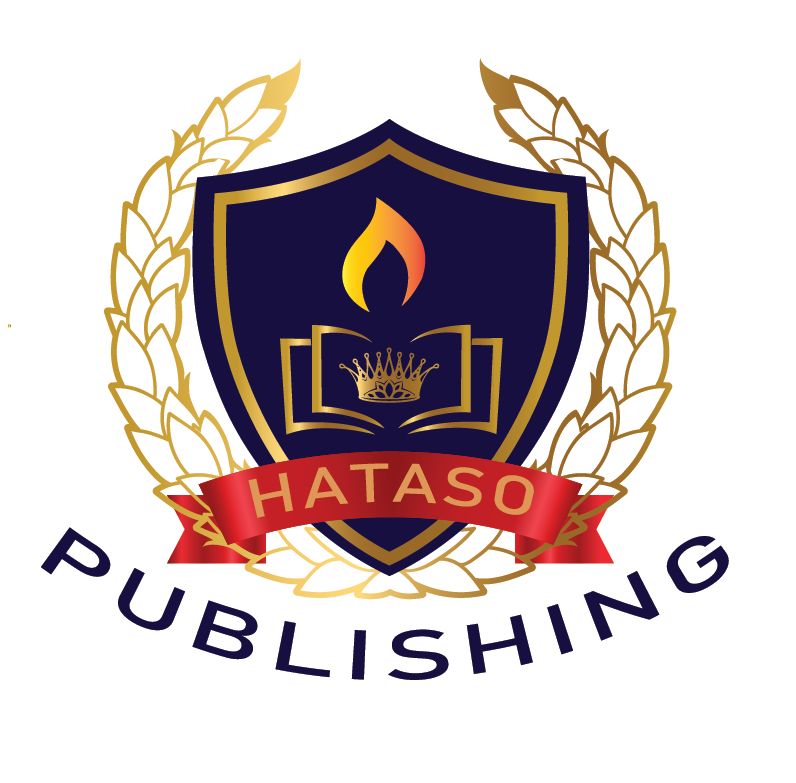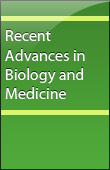


Agriculture and Allied Sciences
Sep 24, 2016
There is no existence of life without plants. Plants are the essential foundation of medicine. Some important drugs that are still in use today are derived from traditional medicinal herbs. The hunt for new medicines has engaged ethnobotany and ethnopharmacology—a new route as an important source of knowledge, which led toward different sources and classes of compounds. Nowadays, studies on structure-activity relationships, and their impact on the design of novel drugs have rendered them one of the utmost valuable and thus significant accomplishments of pharmacochemistry, an advance constituent in the group of pharmaceutical sciences. In this paper, we have discussed the historical importance of medicinal plants, geographical importance throughout the world, some important historical observations of medicinal plants, and leading drugs of plant origin which are still being used to treat various ailments, with or without any structural modifications.

10.18639/RABM.2016.02.338812
Original Research Article
Sep 23, 2016
This study deals with the study of water-quality index (WQI) of a tropical, urban water body in Gorakhpur region (India). Water-quality index was determined on the basis of various physico-chemical parameters like pH, temperature, total solids, total dissolved solids, total suspended solids, dissolved oxygen, biological oxygen demand, hardness, calcium, magnesium, etc. Then, on the basis of calculated WQI, the water was correlated for its use for public consumption, recreation, or any other purpose. A number of parameters directly regulate the utility of water for a particular purpose. The water-quality index obtained for the water body in different seasons of study periods, i.e., rainy season, winter season, and summer season are 78.29, 74.01, and 116.94, respectively; this indicates the water quality of the collected samples to be very poor.

10.18639/RABM.2016.02.293654
Original Research Article
Sep 20, 2016
In this study, the effect of extraction parameters (ethanol concentration, sonication time, and solvent-to-sample ratio) on Ficus deltoidea leaves was investigated using ultrasound-assisted extraction by response surface methodology (RSM). Total phenolic content (TPC) of F. deltoidea extracts was identified using Folin-Ciocalteu method and expressed in gallic acid equivalent (GAE) per g. Box-Behnken statistical design (BBD) was the tool used to find the optimal conditions for maximum TPC. Besides, the extraction yield was measured and stated in percentage. The optimized TPC attained was 455.78 mg GAE/g at 64% ethanol concentration, 10 minutes sonication time, and 20 mL/g solvent-to-sample ratio whereas the greatest extraction yield was 33% with ethanol concentration of 70%, sonication time of 40 minutes, and solvent-to-material ratio at 40 mL/g. The determination coefficient, R2, for TPC indicates that 99.5% capriciousness in the response could be clarified by the ANOVA model and the value of 0.9681 of predicted R2 is in equitable agreement with 0.9890 of adjusted R2. The present study shows that ethanol-water as solvent, a short time of 10 minutes, and adequate solvent-to-sample ratio (20 mL/g) are the best conditions for extraction.

10.18639/RABM.2016.02.336646
Microbiology and Immunology
Sep 20, 2016
The present research is a biological screening of Eichornia crassipes (Pontederiaceae). Dichloromethane and methanol extracts of the whole plant were investigated for their antibacterial, antifungal, phytotoxic, and cytotoxic activities. The antibacterial activity was evaluated using agar well-diffusion method against Bacillus subtilis, Staphylococcus aureus, Escherichia coli, Shigella flexneri, Pseudomonas aeruginosa, and Salmonella typhi. The antifungal activity was evaluated using the agar tube–dilution method against Candida albicans, Candida glabrata, Aspergillus flavus, Microsporum canis, and Fusarium solani. The phytotoxicity activity was determined using Lemna bioassay against Lemna minor. Brine shrimp– cytotoxicity assay was determined against brine-shrimp larvae. Dichloromethane extract exhibited significant phytotoxicity (100% growth regulation) at 1,000 μg/ml concentration against Lemna minor whereas methanolic extracts showed moderate (75% growth regulation) phytotoxicity at the same concentration. Methanolic extract showed cytotoxicity at the highest level of dose whereas dichloromethane extract showed no activity having Etoposide as standard drug. Both of the extracts have nonsignificant antifungal and antibacterial activity.

10.18639/RABM.2016.02.292685
Toxicology and Pharmacology
Sep 11, 2016
Charcoal hemoperfusion (CHP) is one of the extracorporeal removal techniques that are used to remove toxins from the body. CHP generally is considered the preferred method for extracorporeal extraction of several toxins—toxins that are adsorbed by activated charcoal. Assessments of the tannic acid’s protective effects on ophidian poisoning are associated with the toxic proteins’ precipitation by tannic acid. The challenge in treating a snakebite lies in removing the injected poison with minimal damage to blood constituent proteins. An alternative is CHP, and this investigation proposed to develop a column for hemoperfuser cartridge, combining charcoal granules trapped between layers of polymeric material conjugated to tannic acid, using an in vitro model scaled to the Wistar rat, which can be tested in an animal model. The cartridge was evaluated using the 22 full factorial design, in duplicate, as a method to study the effects of granulated-charcoal size and tannic acid concentration on the hematologic profile (platelet and leukocyte counts) and biochemical profile (total serum protein and albumin dosages) of sheep blood. The results demonstrate that charcoal in hemoperfuser cartridge: (1) decreases the serum in sheep blood volume, as consequence, (2) increases the serum proteins’ concentration, and (iii) exerts slight influence on albumin. The inclusion of tannic acid in hemoperfuser column precipitates some of serum proteins and albumin, decreasing their concentrations in the plasma serum. In conclusion, based on these effects we can suggest the use of 0.02 g tannic acid concentration and 8–20 mesh granulated charcoal in hemoperfuser cartridge for precipitating toxic proteins from snake venoms.

10.18639/RABM.2016.02.293742
Original Research Article
Aug 06, 2016
The aim of this study is to compare the use of plant-based insect repellents that are environment friendly with the use of insect repellents based on chemical substances which can be harmful to the environment and human health. The plant studied here is “tea tree”; its scientific name is Melaleuca alternifolia. Essential oil from this plant is extracted by steam distillation method. Based on the previous research, tea tree oil has antimicrobial, antifungal, anti-inflammatory, and insect repellent properties. Some experiments were done on tea tree oil to determine its insect repellent properties and the suitable concentration that can be used to make sure its repelling effect is optimum. The purpose of this determination is to avoid its harmful effect on humans because it can be toxic if it is used at high concentration. The results showed that tea tree oil repelled Tribolium castaneum. Furthermore, the toxicity assays also gave positive result where the tea tree oil has toxic properties against Solenopsis invicta. The lethal dose (LD) of tea tree oil to kill 50% of a group of S. invicta is 23.52 μL/mL. This LD50 is determined by using the arithmetic method of Karber. Broadly, the results showed that M. alternifolia has insect repellent properties and shows toxicity against certain insects.

10.18639/RABM.2016.02.292390
Original Research Article
Aug 05, 2016
In this paper, we have studied the abilities of shark in the sea environment. Sharks are mysterious and misunderstood creatures that have fascinated the people for generations. This trunk will introduce students to the biology and behaviors of sharks. The main purpose of this paper is to discover this animal’s abilities, especially its olfactory bulbs, and the reasons which makes the shark a successful hunter. After studying the characteristics of this animal, we will analyze each of them to answer: “how we can use these capabilities in our life?” Accordingly, we will focus on shark’s swimming and olfactory bulbs to achieve mathematical model. This model can be used in several engineering and other problems in human life.

Agriculture and Allied Sciences
Jul 28, 2016
Goniothalamus species are used in widespread medicines for abortion, anti-aging, body pains, rheumatism, skin complaints, typhoid fever, tympanites, stomach ache and fever. The present study reviews the distribution of species along with their synonyms, their traditional usage, and correlated chemical compounds of Goniothalamus species with stress on the authentication of their ethnobotanical uses. The findings in some Goniothalamus species suggest that the chemical nature of their derivatives, such as acetogenins and styryl-lactones, may justify the use of these species against cancer in Asian traditional medicines due to their cytotoxic potential.

Original Research Article
May 28, 2016
New-onset pancytopenia is a common diagnostic challenge. Pancytopenia is an indication for bone marrow examination. The present study has been carried out to determine the frequencies of various etiologies of pancytopenia based on bone marrow morphology in a defined geographical location. All cases of new-onset pancytopenia, diagnosed on peripheral smear and seen over a four-year period from January 2012 to December 2015 in the department of pathology, were analysed. Patients lacking representative bone marrow in the aspirate or receiving chemotherapy were excluded. Out of 69 cases, 29 were males and 40 were females. Most of the patients were in the age group of 19-60 years (52.2%). Nineteen (26.1%) of them were less than 18 years old. The three major causes of pancytopenia were: megaloblastic anemia (hypercellular marrow with megaloblastic erythropoiesis) in 25 (36.2%) cases, hypercellular marrow with dimorphic erythropoiesis in 13 (18.8%) cases, and haematological malignancies in 12 (17.4%) cases of the study. Bone marrow examination along with laboratory evaluation helps to establish specific diagnosis in cases of new-onset pancytopenia.

10.18639/RABM.2016.02.282945
Diabetes
Apr 07, 2016
Diabetes mellitus type 2 and metabolic syndrome are conditions associated with insulin resistance and hyperglycemia. Metabolic syndrome is a risk factor for diabetes mellitus type 2. Plasma glucose (fasting/postprandial) and serum ceruloplasmin levels and their relationship were studied. Study population consisted of 150 individuals—50 individuals with diabetes mellitus type 2, 50 individuals with metabolic syndrome, and 50 age- and sex-matched healthy controls. Plasma levels of fasting and postprandial glucose were measured along with serum ceruloplasmin. Data was analyzed by ANOVA and Pearson correlation. The fasting and postprandial plasma glucose levels in metabolic syndrome and diabetes mellitus type 2 were increased when compared to control. Serum ceruloplasmin level was 327.8 68.9 in control, 227.3 46.8 in metabolic syndrome, and 194.0 49.6 in diabetes mellitus type 2 individuals. There was a statistically significant negative correlation between the fasting, postprandial plasma glucose, and serum ceruloplasmin in type 2 diabetes mellitus.

Toxicology and Pharmacology
Apr 07, 2016
The present study was conducted to evaluate the toxic potential of tartrazine, a food color, in different tissues in adult rat: blood, liver, kidneys, and spleen. Tartrazine was administered orally at a dose of 300 mg/kg of body weight to adult male Wistar rats during a period of 30 days. Tartrazine treatment led to an increase in platelets count, a reduction in peripheral lymphocytes and in spleen T CD8-lymphocytes. Furthermore, tartrazine increased the activities of hepatocellular enzymes and promoted changes in kidney biomarkers. In order to explore the possible mechanism involved, oxidative-stress assessment was performed. Results identified critical oxidative alterations in all tested organs, as shown by the promotion of lipid peroxidation and the modification of endogenous antioxidant-defense enzymes. Thus, tartrazine is able to induce in adult rats’ hematotoxicity, immunotoxicity, and liver and kidney injuries by changing the whole balance between oxidants and antioxidants.

10.18639/RABM.2016.02.271146
Diabetes
Mar 23, 2016
The purpose of this study was to investigate whether smeathxanthone A isolated from Garcinia smeathmanii improves incisional wound healing in diabetic mice. Male albino alloxan-induced diabetic mice (n 20) were divided into five groups: normal control, diabetic control, 2.5 mg/kg glibenclamide given orally, 0.05 and 0.1 mg/kg smeathxanthone A given subcutaneously. Animals were euthanized on postoperative day 10 after wounding; body weight, blood glucose, breaking strength, and histologic examination were reviewed. Smeathxanthone A significantly increased skin tensile strength (24% higher than diabetic control group when given at 0.1 mg/kg), stimulated hair growth, and reduced signs of inflammation in the scar sections. Smeathxanthone A also reduced blood glucose levels in diabetic mice (45% higher than diabetic control group when given at 0.1 mg/kg). The present study demonstrates that administration of smeathxanthone A after laparotomy expedites wound healing in mice. We suggest that it could confer benefits to tissue healing by significantly enhancing tissue collagen deposition and controlling blood glucose levels.

10.18639/RABM.2016.02.222222
Case Report
Mar 23, 2016
Creutzfeldt-Jakob disease is a rare, transmissible, neurodegenerative disease caused by conformationally changed abnormal prion protein. Most patients present with cognitive impairment, myoclonus, ataxia, visual impairment alone or in combination. Patients who present with ataxia only at the onset are said to have Brownell-Oppenheimer variant of the disease. However, here we present a case where visual symptoms preceded the clinical presentation and hallucinations accompanied the ataxia at the onset of the disease.

10.18639/RABM.2016.02.238456
Cancer and Oncology
Mar 05, 2016
For breast cancer, chemotherapy is the most common treatment in the world. In breast cancer patients, oxidative stress leads to accumulation of free radicals, which generate more oxidative stress during chemotherapy. This chemotherapeutic approach also leads to enhanced generation of reactive oxygen species and increased oxidative stress as a result. Blood samples were collected from 30 subjects (15 patients who received wheat grass juice (WGJ) and 15 patients who were only on chemotherapy) in the age range 25-60. The goal of the present investigation was to study the relationship between oxidative stress and breast cancer by measuring the non-enzymatic antioxidant levels of Glutathione reductase (GSH) and Malondialdehyde (MDA), which are the markers of lipid peroxidation in breast cancer patients and effect of wheat grass juice on these markers. From the results obtained, it was clear that MDA levels were higher whereas GSH levels decreased in breast cancer patients compared with normal controls. Significant changes in the MDA and GSH values were observed between the group receiving WGJ and the group receiving only chemotherapy. The administration of WGJ along with the treatment reduces the extent of oxidative damage and related complications in breast cancer patients.

10.18639/RABM.2015.01.200317
Agriculture and Allied Sciences
Dec 25, 2015
Mushrooms are cosmopolitan heterotrophic organisms that are quite specific in their nutritional and ecological requirements. They are among the most relished food commodities among a number of nonconventional foodstuffs primarily because of their unique flavor and texture. Wild edible mushrooms have been collected and consumed by people since thousands of years. Mushrooms have been exploited commercially the world over. In India due to its diverse climatic conditions, many types of mushrooms are found in the wild. The knowledge of their historical uses as food, medicine, a source of income, and for small-scale businesses and the sociological impacts (myth, culture, and spirituality) are apparently threatened due to slow ethnomycology-research drive.